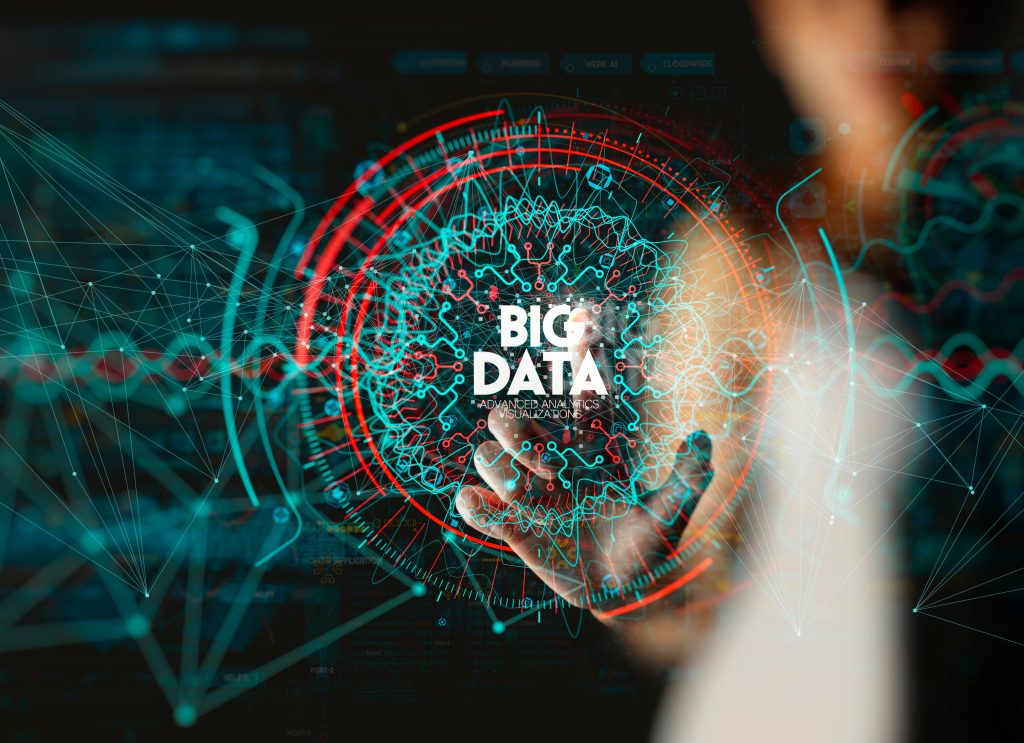What is “Big Data” actually?
Big Data delivers new insights, which in turn open up new opportunities and business models. In the first part of our new blog series, you will learn how this can be achieved.
“Big Data” is on everyone’s lips. In the first part of our new blog series, we first want to clarify what is actually meant by it, how Big Data fundamentally works and what can be done with it.
Big Data is understood to mean data that is more diverse and accumulates in ever greater quantities and at higher speeds. Big Data is therefore fundamentally based on these three Vs:
- Volume: Large volumes of unstructured, low-density data are processed. This can be a wide variety of data from a wide variety of sources and of unknown value. For some companies, this could be hundreds of petabytes.
- Velocity: Data flows directly into memory at the highest speed and is not written to disk. Some Internet-enabled smart products operate in (near) real time and also require real-time evaluation/response.
- Variety: Traditional, structured data types are being joined by new, unstructured or semi-structured data types that require additional pre-processing to derive meaning and support metadata.
In recent years, two more Vs have emerged:
- Value: In recent years, two more Vs have emerged: A significant portion of the value that the world’s largest technology companies provide comes from their data, which they are constantly analyzing to become more efficient and develop new products. Data has intrinsic value, but is only useful when that value is discovered.
- Veracity: How reliable are the available data?
What are the advantages of Big Data?
Big Data provides more complete answers than traditional data analysis because more information is available. More complete answers bring more confidence in the data – and thus a completely different approach to solving problems. So you could say that Big Data delivers new insights, which in turn open up new opportunities and business models.
How does Big Data work in the first place?
Step 1: Integration
First, data must be brought in and processed. It must be ensured that the data is formatted and available in a form that business analysts can continue to work with. Caution: Conventional data integration mechanisms are usually not up to this task. New strategies and technologies are required to analyze the huge data sets on a terabyte or even petabyte scale.
Step 2: Administration
Big Data needs storage. This storage solution can be in the cloud, on-premise or hybrid. In our opinion, the cloud is the obvious choice here because it supports current computing requirements and at the same time can be easily expanded if necessary.
Step 3: Analysis
A visual analysis of the diverse data sets can provide new clarity. Machine learning (ML) and artificial intelligence (AI) can support here.
What can Big Data help with?
Big Data can assist with numerous business activities. Some examples are:
- Product development: Predictive models for new products/services can be built by classifying key attributes of previous and current products/services and relating them to the commercial success of the offerings.
- Predictive maintenance: Factors that can predict mechanical failures may be buried deep in structured data (e.g., year of manufacture, sensor data) – by analyzing this data, companies can perform maintenance early and more cost-effectively.
- Machine learning: Big Data – and the associated availability of large amounts of data – makes training machine learning models possible.
- Fraud and compliance: Big Data helps identify noticeable patterns in data and aggregate large amounts of data to speed up reporting to regulators.
Challenges of Big Data
In order to take advantage of the opportunities that Big Data brings, a number of challenges must first be overcome.
1. Data storage
First, companies need to find ways to store their data effectively. Although new technologies have been developed for data storage, the volume of data doubles about every two years.
2. Data preparation
Clean data (i.e., data that is relevant and organized in a way that allows for meaningful analysis) requires a lot of work. Data scientists spend 50 to 80 percent of their time preparing and editing data.
3. Stay up to date
Keeping up with technology is a constant challenge. A few years ago, Apache Hadoop was the most popular technology for processing Big Data. Today, a combination of the two frameworks Apache Hadoop and Apache Spark seems to be the best approach.
Source: Oracle


